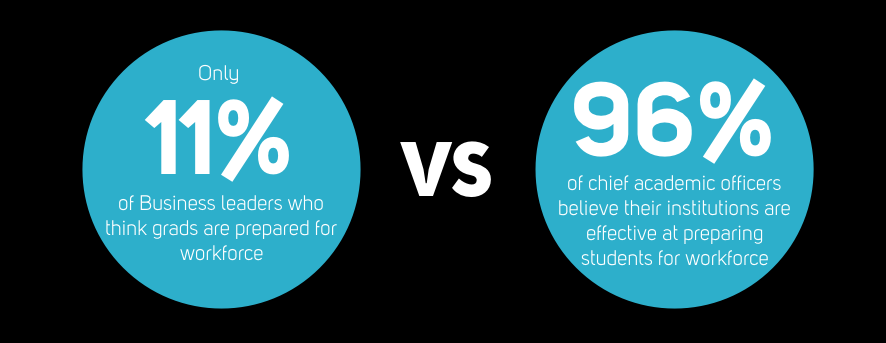From Learning to Doing.
There is much debate regarding the skills gap that exists between what the workforce is expecting and what college students are learning today. Let me begin by saying I am a firm believer in liberal arts education. Teaching skills such as critical thinking, writing, and historical perspective, to name a few are vitally important. However, the pathway to college, or more specifically to a liberal arts focused college or university is not for everyone, nor does it offer a perspective on some of the most sought after skills employers are looking for in recent grads. Take a look at this list compiled this year by Forbes Karsten Strauss.
The top skills that attract interest, or might be connected to getting ahead, are…
- Cloud and Distributed Computing
- Statistical Analysis and Data Mining
- Middleware and Integration Software
- Web Architecture and Development Framework
- User Interface Design
- Software Revision Control Systems
- Data Presentation
- SEO/SEM Marketing
- Mobile Development
- Network and Information Security
Hardly any of these were even a thing 15 years ago, let alone part of our core ‘liberal arts’ education curriculum. In part, because of this shifting landscape, a 2016 study by Express Employment Professionals showed that 71% of recent graduates stayed at their first jobs less than a year. Imagine the cost to employers for this turnover — we estimate it to be upwards of $57 billion annually for businesses to rehire and retrain new employees. Colleges have been slow to adopt to these trends, which is apparent in the 2013 Gallup-Lumina Foundation study of the American Public Opinion on Higher Education and US Business Leaders poll on Higher Education which show that 11% of business leaders think graduates are prepared for the workforce, while 96% of chief academic officers believe their institutions are effective at preparing students for the workforce.
That is a gaping chasm — a few tractor trailers could drive through that gap side by side. It’s a aircraft carrier sized gap.
CareerPath, was founded to address this gap specifically. We are working with employers to identify, articulate, and present the skills they need in their workforce to students who have interest in careers at those companies. We believe it is critical to offer both companies and schools the opportunity to bridge this gap without compromising the quality or integrity of a sound foundational education. The other part of this continuum is that many young people may not be destined for college, but yet they do not understand the options available to them nor the way in which to prepare themselves for opportunities they may find. We are looking at ways to provide all students a clear view of the pathways available to them at whatever stage they may be, from a sophomore in high school right through college graduation. Consider the advantage of being able to match interests and skills with opportunities if the candidate had a clear understanding of what it took to get there. For example, if a young person discovered there was such a thing as an underwater welder, and the career piqued their interest. The path is challenging, but fairly straight forward, one would need to:
- earn their GED or diploma
- earn experience and certification in topside welding
- apply to commercial diving school
- pass the physical exam
- earn additional certifications in welding and commercial diving
- obtain a professional underwater welding job
Now, we can illuminate that path by signposting milestones that will help the student achieve the goal. We can do this by connecting them to the right resources, show them important information at the right time, award them as they progress, and ultimately credential them in the skills needed to perform the job. Our team is working to bridge the gap with both technology solutions (being mobile first, offering digital badging etc.) and with quality content that can come directly from our partner schools or businesses, or created whole cloth in order to meet a specific need.
We see in the future these pathways available to all students. Driven by artificial intelligence that will be able to make adjustments on the fly as the young person makes changes, shows interest or explores new areas, the software will be able to serve up opportunities and illustrate the path with clarity so that the student can safely explore, learn and ultimately succeed. The closer we can come to helping young people find careers that excite them, the more likely it will be that they stay in those first jobs longer, and feel good about the choice they have made. This will result in massive savings for businesses, and reduced anxiety for young people looking to make their way in the world. And then, we can teach them the process of designing their lives so that when they are ready to change careers, which statistics say will happen 5-7 time throughout their working lives, they will know how to fish.
CareerPath is a SaaS technology firm helping people transition from Learning to Doing. Find out more at www.careerpathmobile.com
Richard Portelance is the founder of CareerPath Mobile. He can be discovered online at https://www.linkedin.com/in/rportelance/






